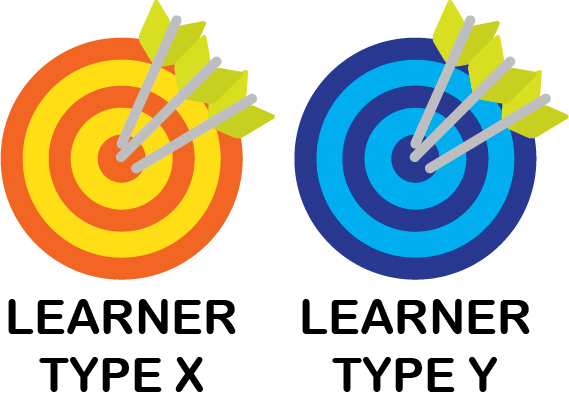Modern education intentionally tries to distribute learning achievement by limiting the attempts at understanding. This is based on the classical requirement of memorization in the early age of scholarly thought and written recordings. As you know, thinking and speaking outpaces writing (and typing even) so memorization and recall among scribes was a priority. This bias towards memorization talent in education creates knowledge gaps upon which academic differentiation is made.
The limited form of education targets and seeks to identify a very particular type of student, especially one good at memorization. Educators are equipped with skills and materials solely towards this bias and incentivized to stay within the bounds of this program. With this perspective, we could think of today’s education as having a precision design that provides a positive outcome for a minor fraction of the student population.
An equitable educational system re-design would provide positive outcomes for practically the entire student population and embrace education accuracy as the vision. This would require identification of learning strengths and preferences of each student, and guidance to a curriculum and educator that would allow academic success. Here are several ways that education accuracy could be implemented:
- Allow for multiple chances to memorize without penalty, and encourage accretive learning. This would provide a path to subject mastery as opposed to having knowledge gaps set in.
- Design assessments based on how a student is best able to reflect their subject mastery. Provide coaching on learning strategies for the various assessment types.
- Learning schedules, pace of learning, and size of learning segments (eg, attention spans) should be tuned to the student. Presently, education is scheduled for the parents’ convenience, and segmented without consideration for the student.
- Group students for symbiotic learning such that they would elevate each other’s progress. A teacher should be able to teach at a level that suits all the students in a class.
- Get performance feedback from students and promote their learning autonomy through involvement in academic decisions and problem-solving. Provide activities that elevate awareness and intrinsic motivation.

I imagine teachers would welcome a shift to education accuracy. Their personal motivation as well as relationships with students would be healthier and stronger. And I am also certain that teachers have many of their own ideas how they could re-design their lessons and teaching styles for accuracy.
The YCISL is seeking to kickstart this hyperleap to education accuracy by developing a series of EQ-assessments for application to each teacher-students grouping. It would involve three stages: pre-instruction, mid-instruction, and post-instruction. The pre-instruction assessment would prepare teachers and students for the partnership they are about to experience. The mid-instruction assessment (or two) would check for progress and allow for corrective action, if necessary. And the post-instruction assessment would evaluate the effectiveness of the EQ-based approach to learning, and perhaps be reported as part of student performance profile as they advance in their education.
